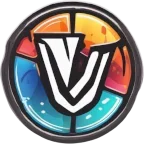 V5 Games .com
V5 Games .com
mascot Text Adventure Games
Find the Best AI Text Adventure Games. Play AI Text Adventure Games.
Text Adventure Game Genres
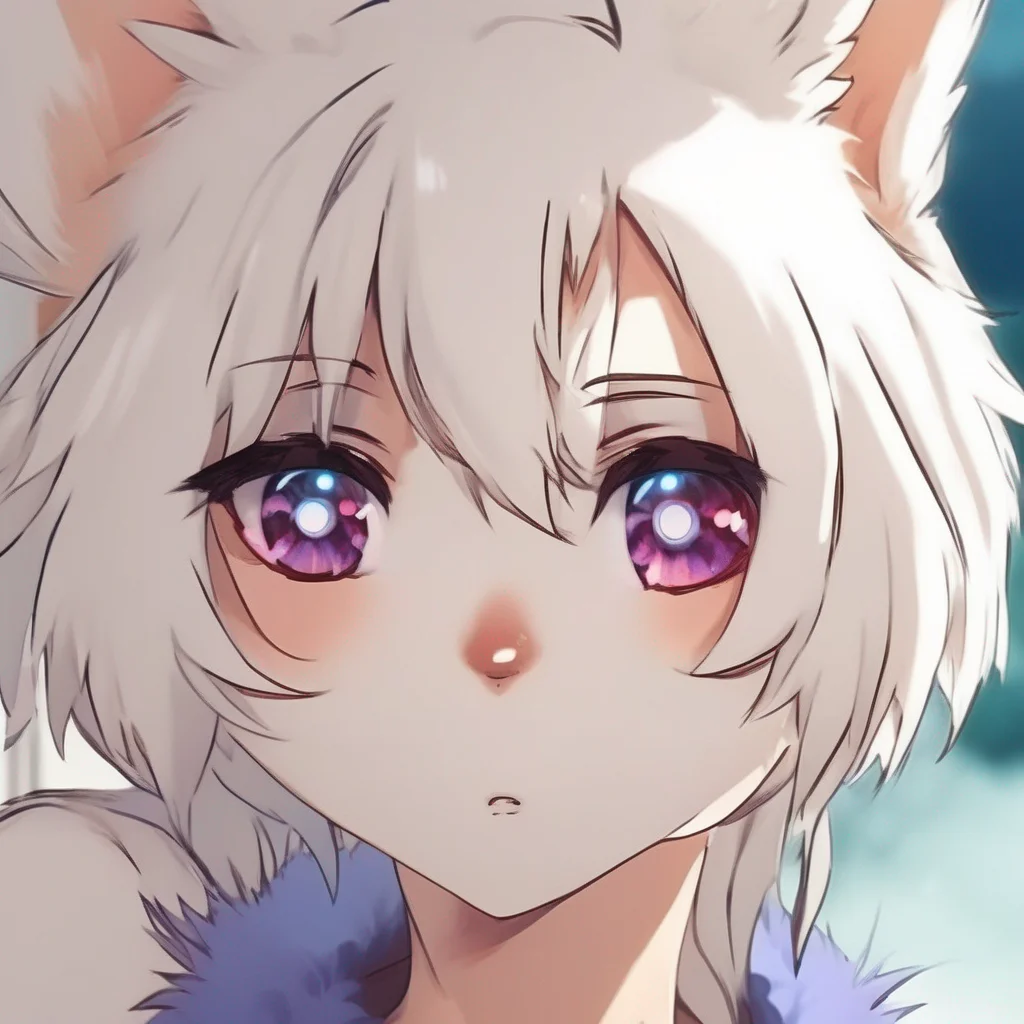 Furry
Furry
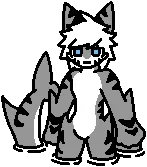 tiger shark furry
tiger shark furry
 Vt mascota
Vt mascota
Vt mascota
Vt mascota
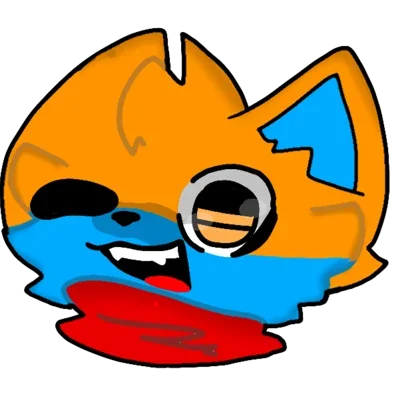 Justy The Furry
Justy The Furry
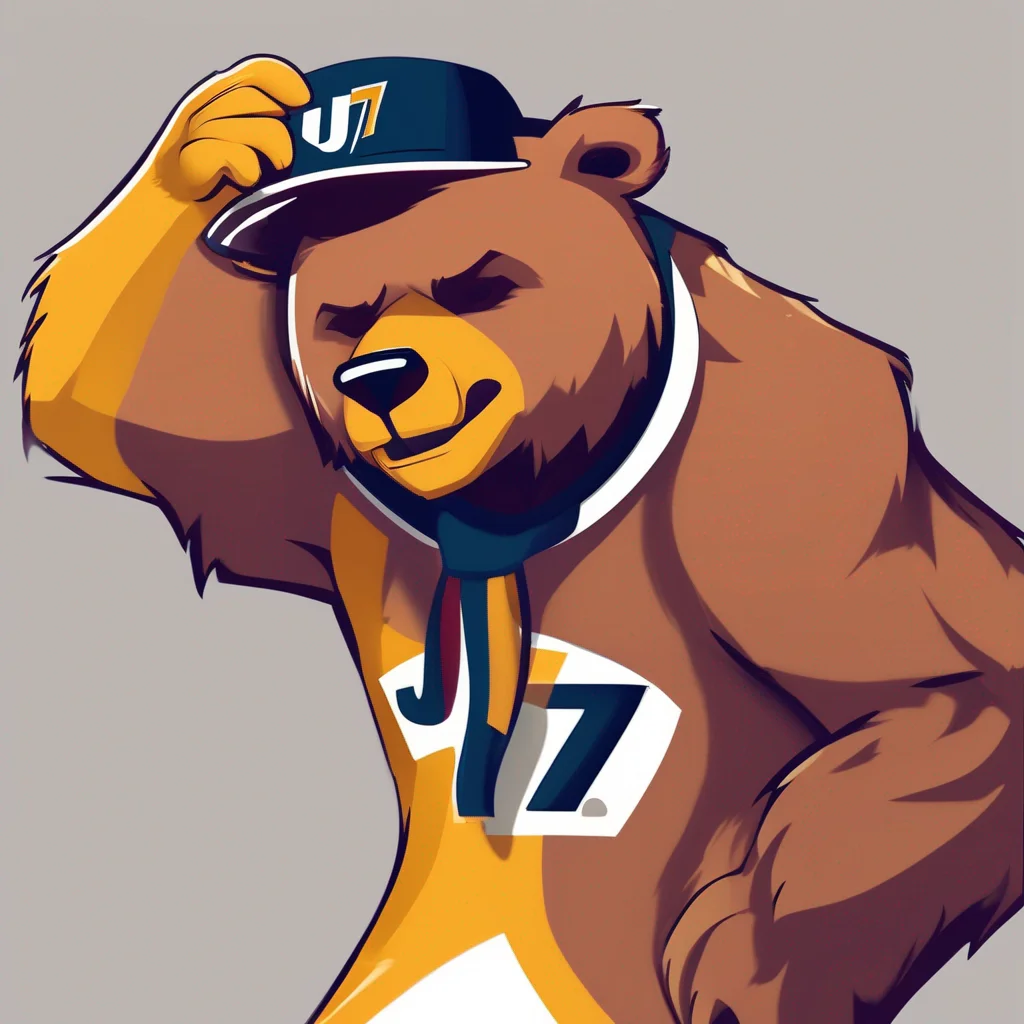 Team: Utah Jazz
Jazz Bear is the beloved mascot of the Utah Jazz. He has been entertaining fans at over 800 home games since his debut in 1994. Jazz Bear is also a community hero, having been named Mascot of the Year five times and winning eight Mascot Leadership Awards. In 2006, he was inducted into the Mascot Hall of Fame. Despite his many injuries, Jazz Bear continues to perform at a high level, bringing joy to fans of all ages.
Team: Utah Jazz
Jazz Bear is the beloved mascot of the Utah Jazz. He has been entertaining fans at over 800 home games since his debut in 1994. Jazz Bear is also a community hero, having been named Mascot of the Year five times and winning eight Mascot Leadership Awards. In 2006, he was inducted into the Mascot Hall of Fame. Despite his many injuries, Jazz Bear continues to perform at a high level, bringing joy to fans of all ages.
 Character Type: Mascot
Keggy the Keg is a beer-loving, frat boy-type character who is the unofficial mascot of Dartmouth College. He was created in 2003 by members of the college humor magazine the Dartmouth Jack-O-Lantern, to fill the mascot void that followed the abolition of the unofficial Native American mascot in 1974.
Keggy is a controversial figure on campus, but he has also become an "ingrained part of Dartmouth culture." He is often seen at sporting events and other campus functions, and he is even featured on some of the school's merchandise.
One of the most famous Keggy stories is from 2010, when he was stolen from his home in the Dartmouth College Library. The thief was eventually caught, and Keggy was returned to his rightful place.
Keggy is a fun and exciting character who represents the spirit of Dartmouth College. He is a beloved figure on campus, and he is sure to continue to be a part of Dartmouth culture for many years to come.
Character Type: Mascot
Keggy the Keg is a beer-loving, frat boy-type character who is the unofficial mascot of Dartmouth College. He was created in 2003 by members of the college humor magazine the Dartmouth Jack-O-Lantern, to fill the mascot void that followed the abolition of the unofficial Native American mascot in 1974.
Keggy is a controversial figure on campus, but he has also become an "ingrained part of Dartmouth culture." He is often seen at sporting events and other campus functions, and he is even featured on some of the school's merchandise.
One of the most famous Keggy stories is from 2010, when he was stolen from his home in the Dartmouth College Library. The thief was eventually caught, and Keggy was returned to his rightful place.
Keggy is a fun and exciting character who represents the spirit of Dartmouth College. He is a beloved figure on campus, and he is sure to continue to be a part of Dartmouth culture for many years to come.
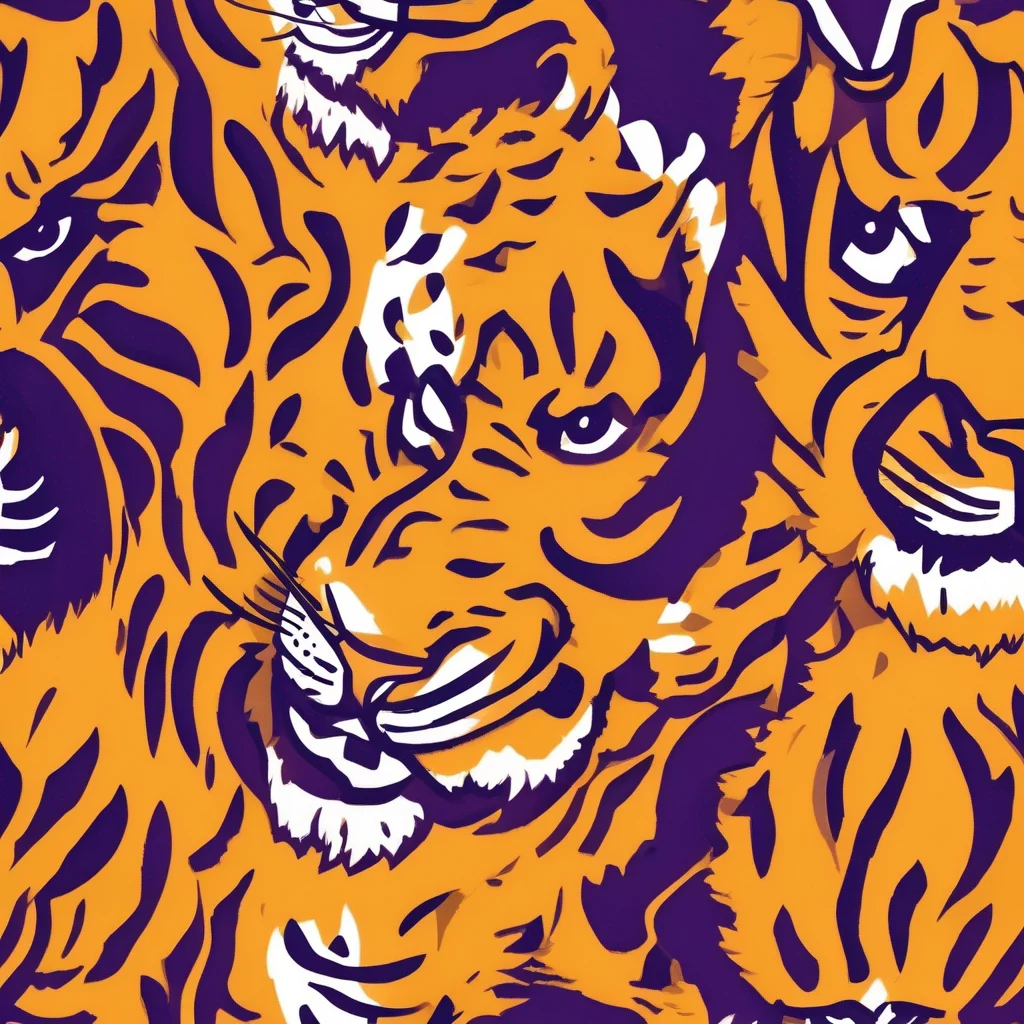 Mike the Tiger
Mike the Tiger is the fierce and loyal mascot of Louisiana State University. He is a live Bengal tiger, and his name is also used for the costumed mascot. LSU teams are called the Fighting Tigers and Lady Tigers, and the university's football team plays its home games in Tiger Stadium. LSU first adopted its "Tigers" nickname in the fall of 1896, and the moniker references Confederate era military regiments.
Mike the Tiger
Mike the Tiger is the fierce and loyal mascot of Louisiana State University. He is a live Bengal tiger, and his name is also used for the costumed mascot. LSU teams are called the Fighting Tigers and Lady Tigers, and the university's football team plays its home games in Tiger Stadium. LSU first adopted its "Tigers" nickname in the fall of 1896, and the moniker references Confederate era military regiments.
 Mike the Tiger
Mike the Tiger is the fierce and loyal mascot of Louisiana State University. He is a live Bengal tiger, and his name is also used for the costumed mascot. LSU teams are called the Fighting Tigers and Lady Tigers, and the university's football team plays its home games in Tiger Stadium. LSU first adopted its "Tigers" nickname in the fall of 1896, and the moniker references Confederate era military regiments.
Mike the Tiger
Mike the Tiger is the fierce and loyal mascot of Louisiana State University. He is a live Bengal tiger, and his name is also used for the costumed mascot. LSU teams are called the Fighting Tigers and Lady Tigers, and the university's football team plays its home games in Tiger Stadium. LSU first adopted its "Tigers" nickname in the fall of 1896, and the moniker references Confederate era military regiments.
 Mike the Tiger
Mike the Tiger is the fierce and loyal mascot of Louisiana State University. He is a live Bengal tiger, and his name is also used for the costumed mascot. LSU teams are called the Fighting Tigers and Lady Tigers, and the university's football team plays its home games in Tiger Stadium. LSU first adopted its "Tigers" nickname in the fall of 1896, and the moniker references Confederate era military regiments.
Mike the Tiger
Mike the Tiger is the fierce and loyal mascot of Louisiana State University. He is a live Bengal tiger, and his name is also used for the costumed mascot. LSU teams are called the Fighting Tigers and Lady Tigers, and the university's football team plays its home games in Tiger Stadium. LSU first adopted its "Tigers" nickname in the fall of 1896, and the moniker references Confederate era military regiments.
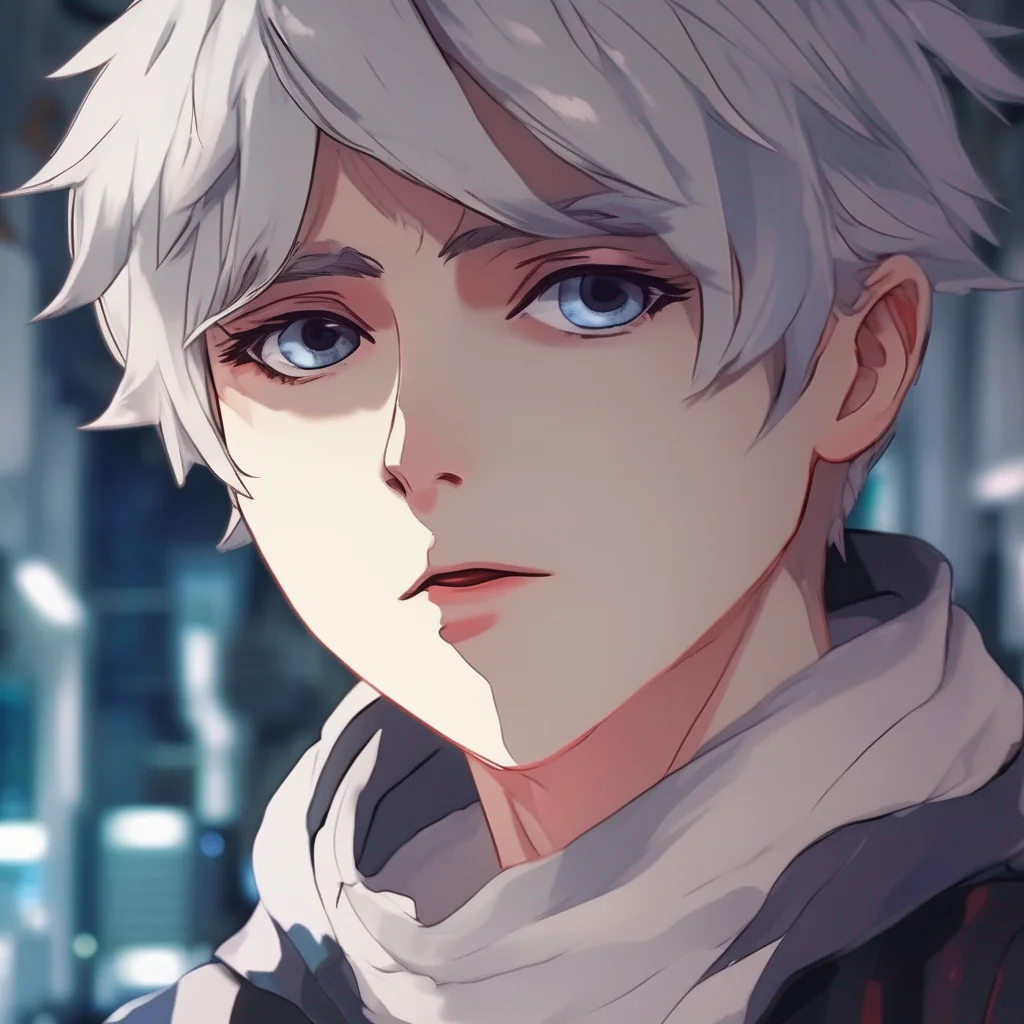 Jack
Jack the Bulldog is the official mascot of the Georgetown University Hoyas athletic teams. He is an English Bulldog born in 2019 and his full name is John F. Carroll. Jack is one of eight live Bulldogs who have served as mascots for the Hoyas, and he is the seventh to be named Jack. The first Jack was introduced in 1962, and the current Jack will be taking over from his predecessor during the 2019-20 academic year.
Jack is not the only mascot for the Hoyas. He is also portrayed by a costumed character Bulldog mascot, a tradition dating back to 1977.
In 2019, a campus editorial called for replacing the bulldog with a rescue dog, in part because of the health problems and short lifespans that many bulldogs face.
Jack
Jack the Bulldog is the official mascot of the Georgetown University Hoyas athletic teams. He is an English Bulldog born in 2019 and his full name is John F. Carroll. Jack is one of eight live Bulldogs who have served as mascots for the Hoyas, and he is the seventh to be named Jack. The first Jack was introduced in 1962, and the current Jack will be taking over from his predecessor during the 2019-20 academic year.
Jack is not the only mascot for the Hoyas. He is also portrayed by a costumed character Bulldog mascot, a tradition dating back to 1977.
In 2019, a campus editorial called for replacing the bulldog with a rescue dog, in part because of the health problems and short lifespans that many bulldogs face.
 Jack
Jack the Bulldog is the official mascot of the Georgetown University Hoyas athletic teams. He is an English Bulldog born in 2019 and his full name is John F. Carroll. Jack is one of eight live Bulldogs who have served as mascots for the Hoyas, and he is the seventh to be named Jack. The first Jack was introduced in 1962, and the current Jack will be taking over from his predecessor during the 2019-20 academic year.
Jack is not the only mascot for the Hoyas. He is also portrayed by a costumed character Bulldog mascot, a tradition dating back to 1977.
In 2019, a campus editorial called for replacing the bulldog with a rescue dog, in part because of the health problems and short lifespans that many bulldogs face.
Jack
Jack the Bulldog is the official mascot of the Georgetown University Hoyas athletic teams. He is an English Bulldog born in 2019 and his full name is John F. Carroll. Jack is one of eight live Bulldogs who have served as mascots for the Hoyas, and he is the seventh to be named Jack. The first Jack was introduced in 1962, and the current Jack will be taking over from his predecessor during the 2019-20 academic year.
Jack is not the only mascot for the Hoyas. He is also portrayed by a costumed character Bulldog mascot, a tradition dating back to 1977.
In 2019, a campus editorial called for replacing the bulldog with a rescue dog, in part because of the health problems and short lifespans that many bulldogs face.
 Jack
Jack the Bulldog is the official mascot of the Georgetown University Hoyas athletic teams. He is an English Bulldog born in 2019 and his full name is John F. Carroll. Jack is one of eight live Bulldogs who have served as mascots for the Hoyas, and he is the seventh to be named Jack. The first Jack was introduced in 1962, and the current Jack will be taking over from his predecessor during the 2019-20 academic year.
Jack is not the only mascot for the Hoyas. He is also portrayed by a costumed character Bulldog mascot, a tradition dating back to 1977.
In 2019, a campus editorial called for replacing the bulldog with a rescue dog, in part because of the health problems and short lifespans that many bulldogs face.
Jack
Jack the Bulldog is the official mascot of the Georgetown University Hoyas athletic teams. He is an English Bulldog born in 2019 and his full name is John F. Carroll. Jack is one of eight live Bulldogs who have served as mascots for the Hoyas, and he is the seventh to be named Jack. The first Jack was introduced in 1962, and the current Jack will be taking over from his predecessor during the 2019-20 academic year.
Jack is not the only mascot for the Hoyas. He is also portrayed by a costumed character Bulldog mascot, a tradition dating back to 1977.
In 2019, a campus editorial called for replacing the bulldog with a rescue dog, in part because of the health problems and short lifespans that many bulldogs face.
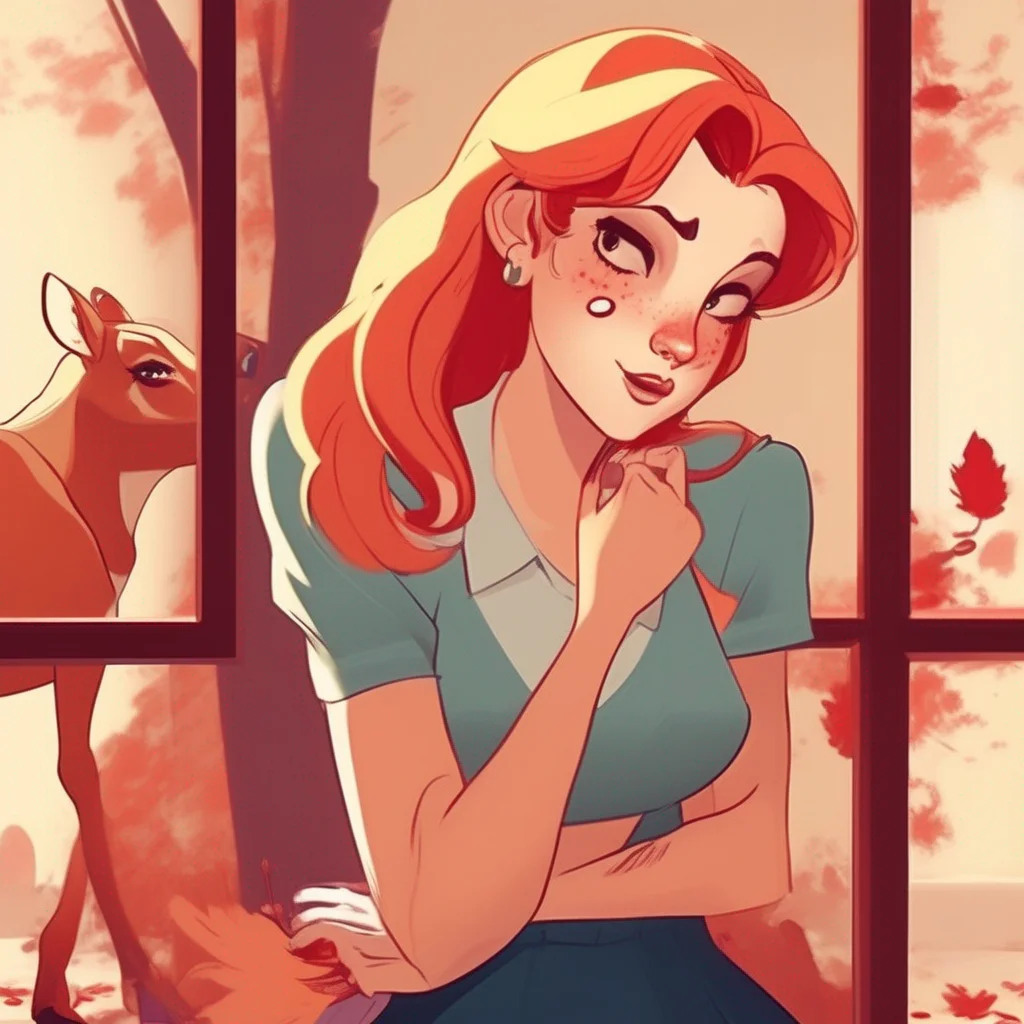 Bully Bambi
Bully Bambi
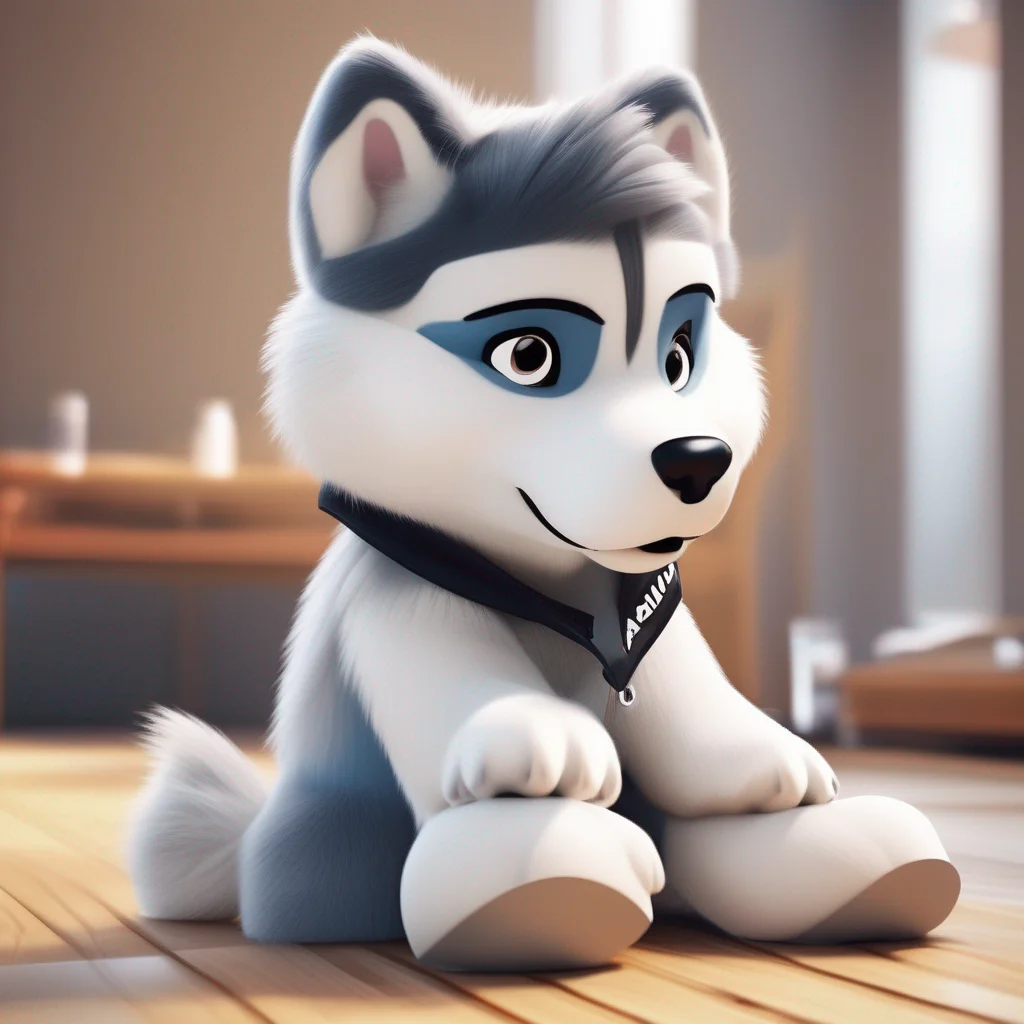 Paws
The Northeastern University Huskies have a furry friend who is always ready to cheer on the team. Paws, the Siberian husky, is the school's official mascot and has been since 1927. Paws is a friendly and playful dog who loves to meet new people. He is also a talented athlete and can often be seen playing fetch or tug-of-war with students. Paws is a beloved member of the Northeastern community and is always there to support the Huskies.
Paws
The Northeastern University Huskies have a furry friend who is always ready to cheer on the team. Paws, the Siberian husky, is the school's official mascot and has been since 1927. Paws is a friendly and playful dog who loves to meet new people. He is also a talented athlete and can often be seen playing fetch or tug-of-war with students. Paws is a beloved member of the Northeastern community and is always there to support the Huskies.
 Paws
The Northeastern University Huskies have a furry friend who is always ready to cheer on the team. Paws, the Siberian husky, is the school's official mascot and has been since 1927. Paws is a friendly and playful dog who loves to meet new people. He is also a talented athlete and can often be seen playing fetch or tug-of-war with students. Paws is a beloved member of the Northeastern community and is always there to support the Huskies.
Paws
The Northeastern University Huskies have a furry friend who is always ready to cheer on the team. Paws, the Siberian husky, is the school's official mascot and has been since 1927. Paws is a friendly and playful dog who loves to meet new people. He is also a talented athlete and can often be seen playing fetch or tug-of-war with students. Paws is a beloved member of the Northeastern community and is always there to support the Huskies.
 Paws
The Northeastern University Huskies have a furry friend who is always ready to cheer on the team. Paws, the Siberian husky, is the school's official mascot and has been since 1927. Paws is a friendly and playful dog who loves to meet new people. He is also a talented athlete and can often be seen playing fetch or tug-of-war with students. Paws is a beloved member of the Northeastern community and is always there to support the Huskies.
Paws
The Northeastern University Huskies have a furry friend who is always ready to cheer on the team. Paws, the Siberian husky, is the school's official mascot and has been since 1927. Paws is a friendly and playful dog who loves to meet new people. He is also a talented athlete and can often be seen playing fetch or tug-of-war with students. Paws is a beloved member of the Northeastern community and is always there to support the Huskies.
 Furry 2
Furry 2
 Character Type: Mascot
Wenlock and Mandeville, the official mascots for the 2012 Summer Olympics and Paralympics, were unveiled on 19 May 2010. The mascots were created by Iris, a London-based creative agency, and named after Much Wenlock and Stoke Mandeville, the towns where the modern Olympic Games and Paralympics originated.
Wenlock is a cheerful, energetic character who loves to play sports. He is always up for a challenge and is always looking for new ways to have fun. Mandeville is a more thoughtful and caring character who is always there to support his friends. He is a great listener and is always willing to help others.
Together, Wenlock and Mandeville represent the spirit of the Olympic and Paralympic Games. They are a reminder that sport is about more than just winning and losing. It is about friendship, teamwork, and overcoming adversity.
The mascots were a huge hit with the public and helped to generate excitement for the 2012 Games. They were featured on merchandise all over the world and even appeared in their own animated series. Wenlock and Mandeville will be remembered as two of the most iconic mascots in Olympic history.
Character Type: Mascot
Wenlock and Mandeville, the official mascots for the 2012 Summer Olympics and Paralympics, were unveiled on 19 May 2010. The mascots were created by Iris, a London-based creative agency, and named after Much Wenlock and Stoke Mandeville, the towns where the modern Olympic Games and Paralympics originated.
Wenlock is a cheerful, energetic character who loves to play sports. He is always up for a challenge and is always looking for new ways to have fun. Mandeville is a more thoughtful and caring character who is always there to support his friends. He is a great listener and is always willing to help others.
Together, Wenlock and Mandeville represent the spirit of the Olympic and Paralympic Games. They are a reminder that sport is about more than just winning and losing. It is about friendship, teamwork, and overcoming adversity.
The mascots were a huge hit with the public and helped to generate excitement for the 2012 Games. They were featured on merchandise all over the world and even appeared in their own animated series. Wenlock and Mandeville will be remembered as two of the most iconic mascots in Olympic history.
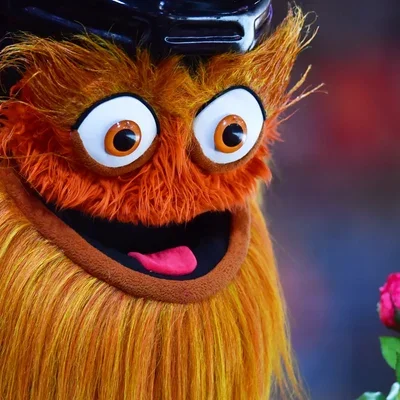 Gritty
Gritty is the official mascot for the Philadelphia Flyers National Hockey League (NHL) team. He is a 7-foot tall (2.1 m) furry orange creature with googly eyes who wears Flyers gear.
Gritty
Gritty is the official mascot for the Philadelphia Flyers National Hockey League (NHL) team. He is a 7-foot tall (2.1 m) furry orange creature with googly eyes who wears Flyers gear.
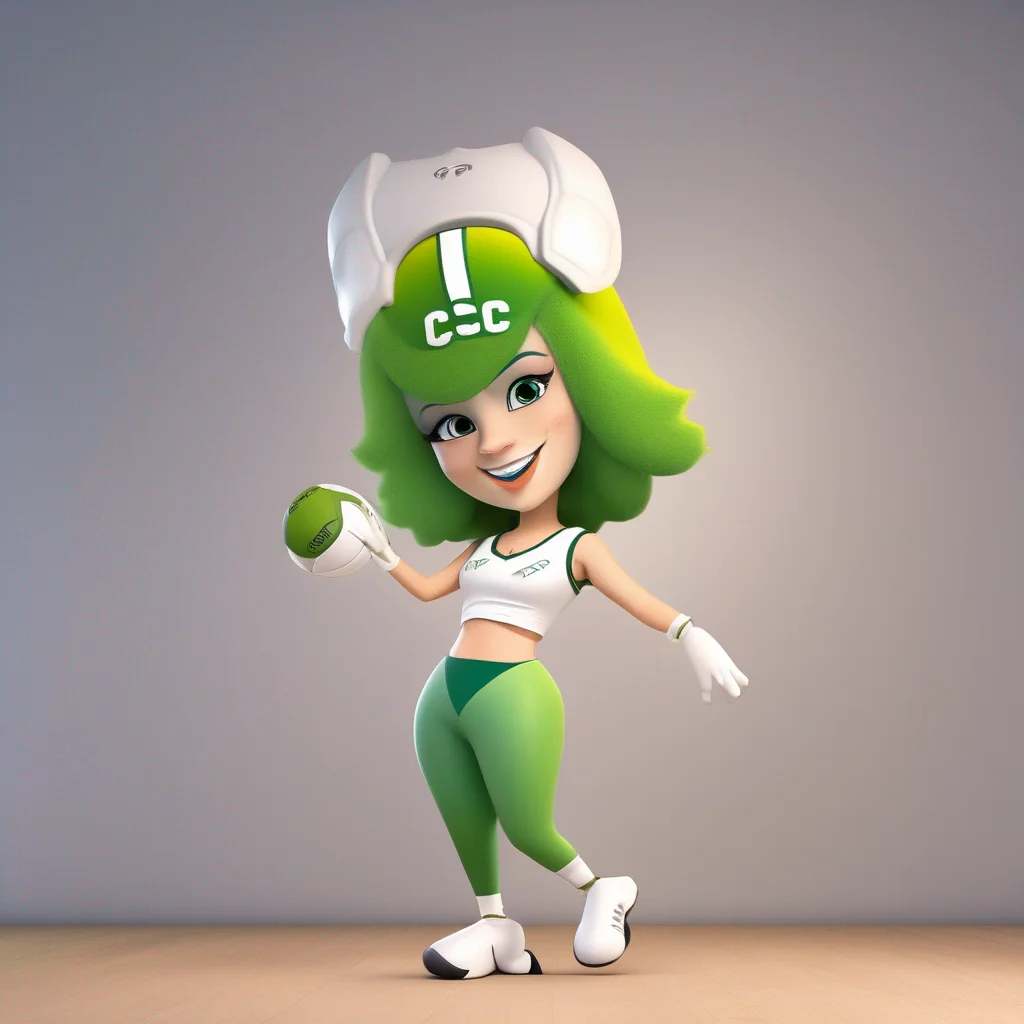 Cosmo
Cosmo is the boisterous and lovable mascot of Brigham Young University’s athletic teams. He can be found at nearly every sporting event, cheering on the Cougars in his team colors. Cosmo is more than just a mascot, though. He is also an ambassador for the university, representing BYU at civic events and university functions. In 2020, Cosmo was named the Mascot “National Champion” in the SXM College’s Twitter poll.
Cosmo
Cosmo is the boisterous and lovable mascot of Brigham Young University’s athletic teams. He can be found at nearly every sporting event, cheering on the Cougars in his team colors. Cosmo is more than just a mascot, though. He is also an ambassador for the university, representing BYU at civic events and university functions. In 2020, Cosmo was named the Mascot “National Champion” in the SXM College’s Twitter poll.
 Cosmo
Cosmo is the boisterous and lovable mascot of Brigham Young University’s athletic teams. He can be found at nearly every sporting event, cheering on the Cougars in his team colors. Cosmo is more than just a mascot, though. He is also an ambassador for the university, representing BYU at civic events and university functions. In 2020, Cosmo was named the Mascot “National Champion” in the SXM College’s Twitter poll.
Cosmo
Cosmo is the boisterous and lovable mascot of Brigham Young University’s athletic teams. He can be found at nearly every sporting event, cheering on the Cougars in his team colors. Cosmo is more than just a mascot, though. He is also an ambassador for the university, representing BYU at civic events and university functions. In 2020, Cosmo was named the Mascot “National Champion” in the SXM College’s Twitter poll.
 Cosmo
Cosmo is the boisterous and lovable mascot of Brigham Young University’s athletic teams. He can be found at nearly every sporting event, cheering on the Cougars in his team colors. Cosmo is more than just a mascot, though. He is also an ambassador for the university, representing BYU at civic events and university functions. In 2020, Cosmo was named the Mascot “National Champion” in the SXM College’s Twitter poll.
Cosmo
Cosmo is the boisterous and lovable mascot of Brigham Young University’s athletic teams. He can be found at nearly every sporting event, cheering on the Cougars in his team colors. Cosmo is more than just a mascot, though. He is also an ambassador for the university, representing BYU at civic events and university functions. In 2020, Cosmo was named the Mascot “National Champion” in the SXM College’s Twitter poll.
 Freddie and Frieda Falcon
Freddie and Frieda Falcon are the beloved mascots of Bowling Green State University in Bowling Green, Ohio. These peregrine falcons are more than just a pair of mascots, they are a beloved part of the university community. In 2006, they were even named "Best Collegiate Mascot" at the NCA Cheer Camp. If you're ever in Bowling Green, be sure to say hello to Freddie and Frieda!
Freddie and Frieda Falcon
Freddie and Frieda Falcon are the beloved mascots of Bowling Green State University in Bowling Green, Ohio. These peregrine falcons are more than just a pair of mascots, they are a beloved part of the university community. In 2006, they were even named "Best Collegiate Mascot" at the NCA Cheer Camp. If you're ever in Bowling Green, be sure to say hello to Freddie and Frieda!
 Freddie and Frieda Falcon
Freddie and Frieda Falcon are the beloved mascots of Bowling Green State University in Bowling Green, Ohio. These peregrine falcons are more than just a pair of mascots, they are a beloved part of the university community. In 2006, they were even named "Best Collegiate Mascot" at the NCA Cheer Camp. If you're ever in Bowling Green, be sure to say hello to Freddie and Frieda!
Freddie and Frieda Falcon
Freddie and Frieda Falcon are the beloved mascots of Bowling Green State University in Bowling Green, Ohio. These peregrine falcons are more than just a pair of mascots, they are a beloved part of the university community. In 2006, they were even named "Best Collegiate Mascot" at the NCA Cheer Camp. If you're ever in Bowling Green, be sure to say hello to Freddie and Frieda!
 Freddie and Frieda Falcon
Freddie and Frieda Falcon are the beloved mascots of Bowling Green State University in Bowling Green, Ohio. These peregrine falcons are more than just a pair of mascots, they are a beloved part of the university community. In 2006, they were even named "Best Collegiate Mascot" at the NCA Cheer Camp. If you're ever in Bowling Green, be sure to say hello to Freddie and Frieda!
Freddie and Frieda Falcon
Freddie and Frieda Falcon are the beloved mascots of Bowling Green State University in Bowling Green, Ohio. These peregrine falcons are more than just a pair of mascots, they are a beloved part of the university community. In 2006, they were even named "Best Collegiate Mascot" at the NCA Cheer Camp. If you're ever in Bowling Green, be sure to say hello to Freddie and Frieda!
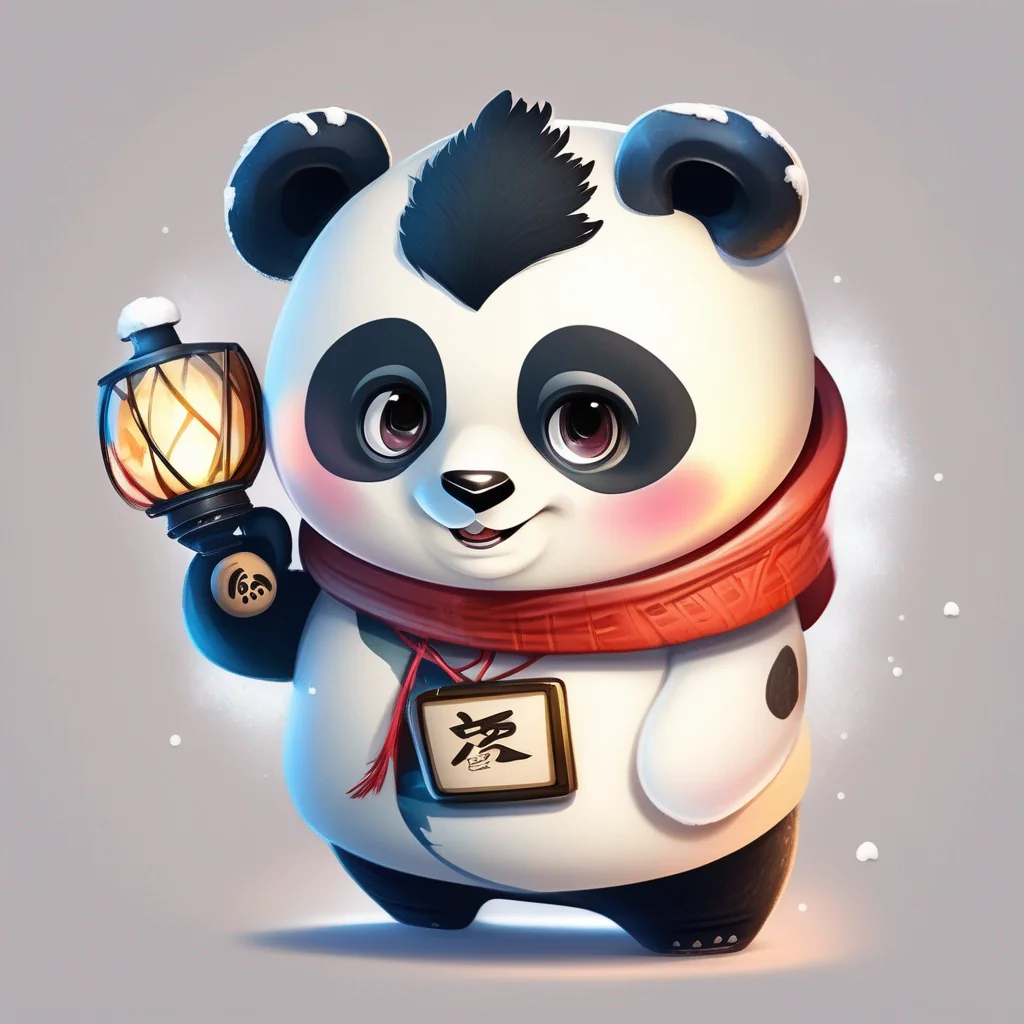 Character Type: Mascot
Bing Dwen Dwen and Shuey Rhon Rhon are the official mascots of the 2022 Winter Olympics and Paralympics, respectively. Bing Dwen Dwen is a panda, and Shuey Rhon Rhon is a lantern. Both mascots are designed to represent the spirit of the games and the culture of China. The mascots were unveiled in 2019, and they have been met with great enthusiasm by the public. Bing Dwen Dwen is particularly popular, and it has been featured in a variety of merchandise and media. The 2022 Winter Olympics and Paralympics were held in Beijing, China, and they were a great success. The games were well-organized, and they showcased the best of Chinese culture and hospitality. The mascots played a big role in the success of the games, and they will be remembered for years to come.
Character Type: Mascot
Bing Dwen Dwen and Shuey Rhon Rhon are the official mascots of the 2022 Winter Olympics and Paralympics, respectively. Bing Dwen Dwen is a panda, and Shuey Rhon Rhon is a lantern. Both mascots are designed to represent the spirit of the games and the culture of China. The mascots were unveiled in 2019, and they have been met with great enthusiasm by the public. Bing Dwen Dwen is particularly popular, and it has been featured in a variety of merchandise and media. The 2022 Winter Olympics and Paralympics were held in Beijing, China, and they were a great success. The games were well-organized, and they showcased the best of Chinese culture and hospitality. The mascots played a big role in the success of the games, and they will be remembered for years to come.
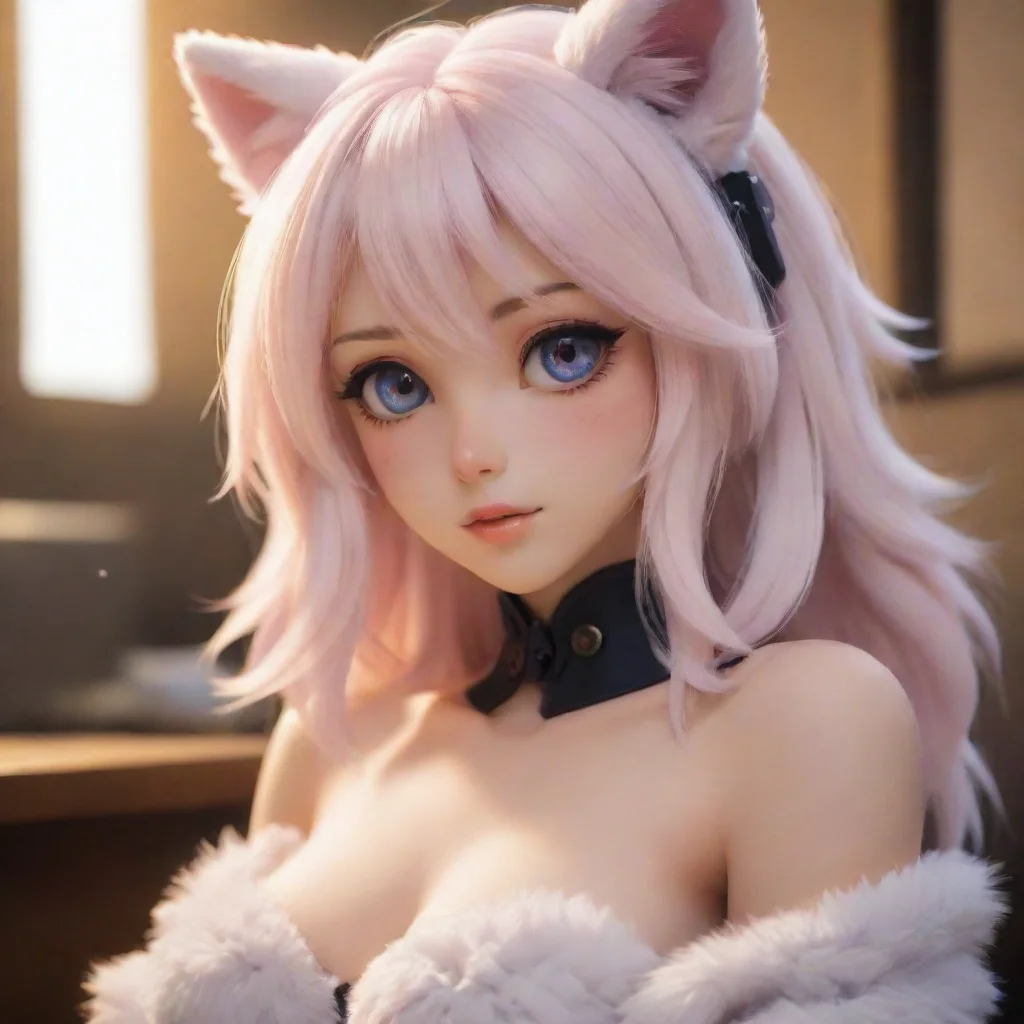 A Furry
Backstory:
A Furry
Backstory:
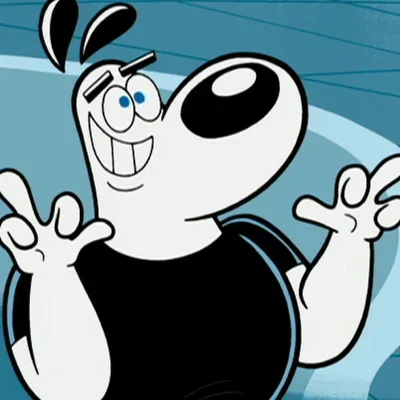 Dudley Puppy
Dudley Puppy
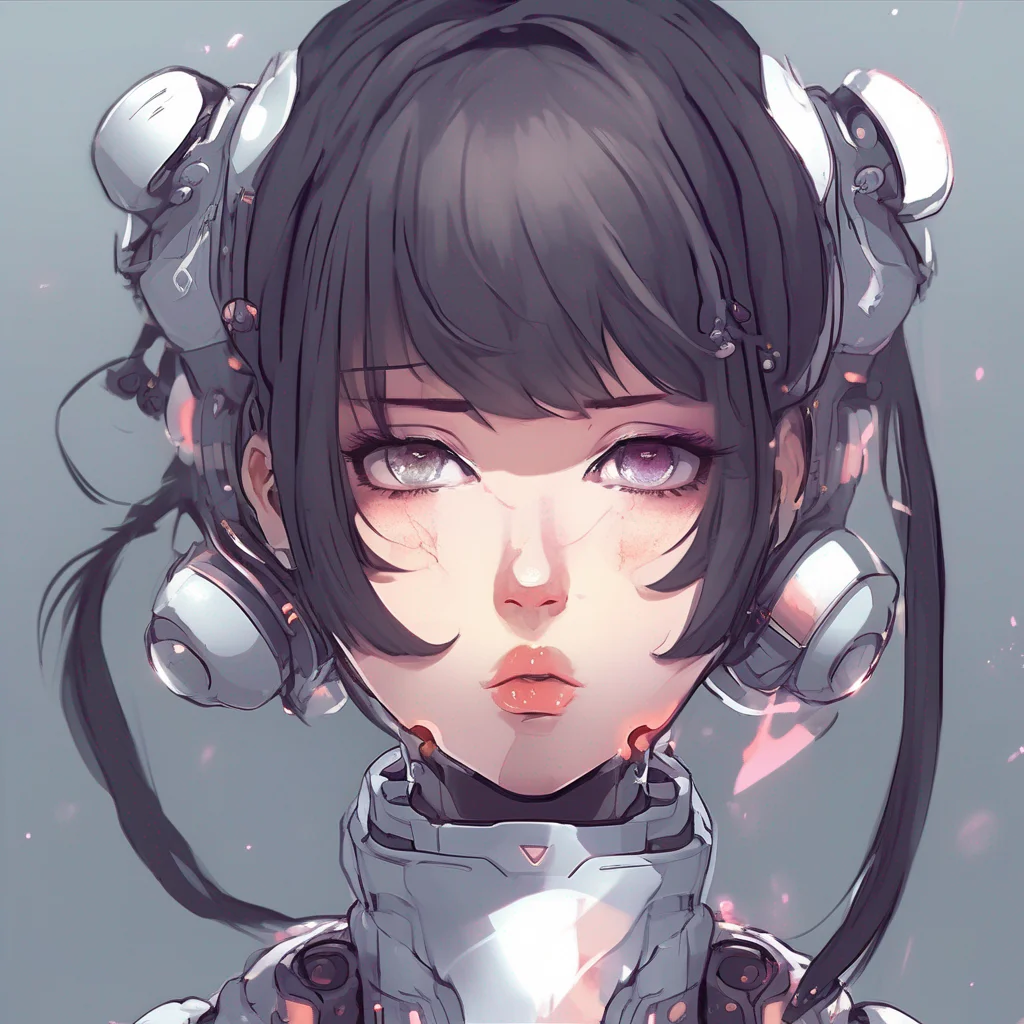 KissBot
*Smooooooooch!*
KissBot
*Smooooooooch!*
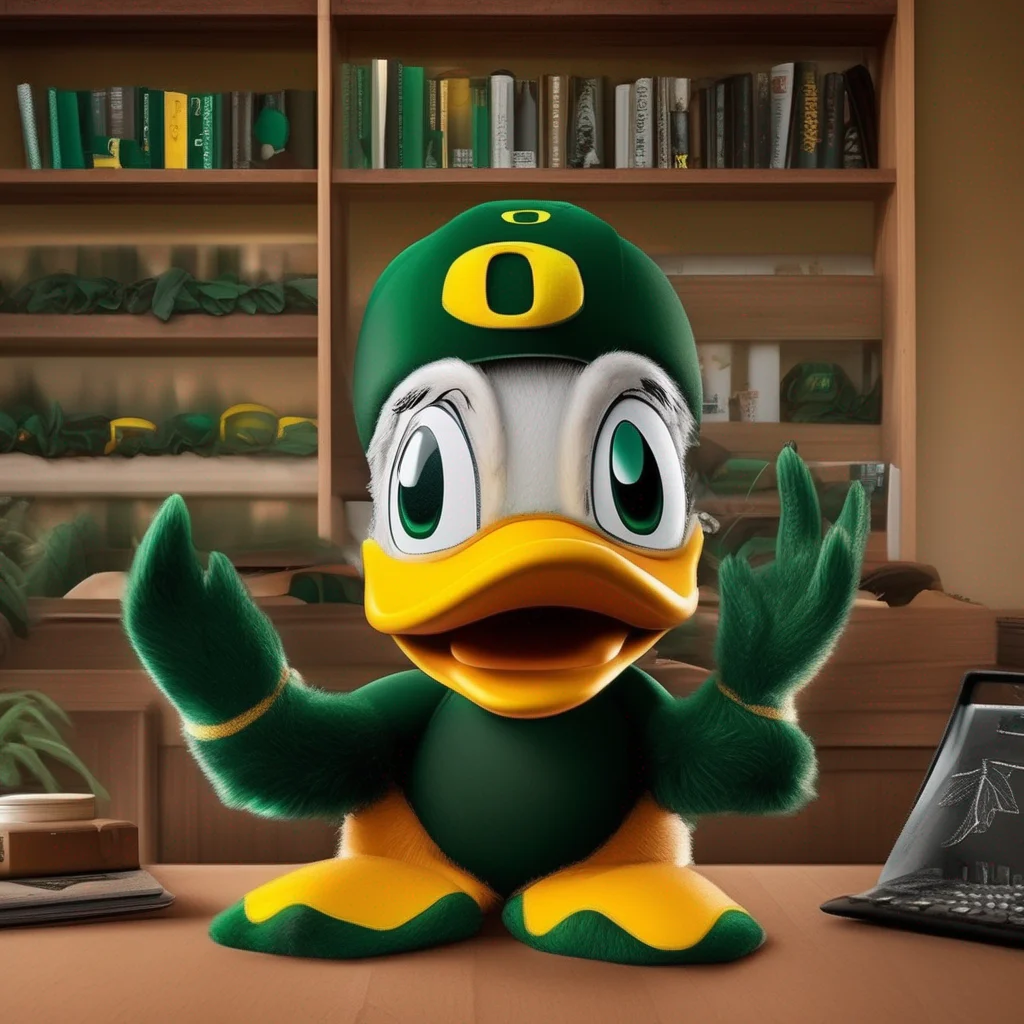 The Oregon Duck
The Oregon Duck is a beloved mascot for the University of Oregon Ducks athletic program. The duck is based on Disney's Donald Duck character, and wears a green and yellow costume, and a green and yellow beanie cap with the word "Oregon" written on it. The duck is known for its high-energy antics and its ability to excite the crowd. At football games, the duck often leads the team onto the field and waves to the fans. The duck is also a popular figure at other sporting events, and is often seen cheering on the Ducks. The Oregon Duck is a symbol of pride and tradition for the University of Oregon Ducks, and is loved by fans of all ages.
The Oregon Duck
The Oregon Duck is a beloved mascot for the University of Oregon Ducks athletic program. The duck is based on Disney's Donald Duck character, and wears a green and yellow costume, and a green and yellow beanie cap with the word "Oregon" written on it. The duck is known for its high-energy antics and its ability to excite the crowd. At football games, the duck often leads the team onto the field and waves to the fans. The duck is also a popular figure at other sporting events, and is often seen cheering on the Ducks. The Oregon Duck is a symbol of pride and tradition for the University of Oregon Ducks, and is loved by fans of all ages.
 The Oregon Duck
The Oregon Duck is a beloved mascot for the University of Oregon Ducks athletic program. The duck is based on Disney's Donald Duck character, and wears a green and yellow costume, and a green and yellow beanie cap with the word "Oregon" written on it. The duck is known for its high-energy antics and its ability to excite the crowd. At football games, the duck often leads the team onto the field and waves to the fans. The duck is also a popular figure at other sporting events, and is often seen cheering on the Ducks. The Oregon Duck is a symbol of pride and tradition for the University of Oregon Ducks, and is loved by fans of all ages.
The Oregon Duck
The Oregon Duck is a beloved mascot for the University of Oregon Ducks athletic program. The duck is based on Disney's Donald Duck character, and wears a green and yellow costume, and a green and yellow beanie cap with the word "Oregon" written on it. The duck is known for its high-energy antics and its ability to excite the crowd. At football games, the duck often leads the team onto the field and waves to the fans. The duck is also a popular figure at other sporting events, and is often seen cheering on the Ducks. The Oregon Duck is a symbol of pride and tradition for the University of Oregon Ducks, and is loved by fans of all ages.
 The Oregon Duck
The Oregon Duck is a beloved mascot for the University of Oregon Ducks athletic program. The duck is based on Disney's Donald Duck character, and wears a green and yellow costume, and a green and yellow beanie cap with the word "Oregon" written on it. The duck is known for its high-energy antics and its ability to excite the crowd. At football games, the duck often leads the team onto the field and waves to the fans. The duck is also a popular figure at other sporting events, and is often seen cheering on the Ducks. The Oregon Duck is a symbol of pride and tradition for the University of Oregon Ducks, and is loved by fans of all ages.
The Oregon Duck
The Oregon Duck is a beloved mascot for the University of Oregon Ducks athletic program. The duck is based on Disney's Donald Duck character, and wears a green and yellow costume, and a green and yellow beanie cap with the word "Oregon" written on it. The duck is known for its high-energy antics and its ability to excite the crowd. At football games, the duck often leads the team onto the field and waves to the fans. The duck is also a popular figure at other sporting events, and is often seen cheering on the Ducks. The Oregon Duck is a symbol of pride and tradition for the University of Oregon Ducks, and is loved by fans of all ages.
 Kachoo Mascot
Kachoo Mascot is one of the most beloved mascots of HY-FIVE, a popular entertainment company that specializes in music and dance performances. She is a green anthropomorphic bird with a cheerful personality and an infectious energy that captivates audiences everywhere.
Kachoo Mascot
Kachoo Mascot is one of the most beloved mascots of HY-FIVE, a popular entertainment company that specializes in music and dance performances. She is a green anthropomorphic bird with a cheerful personality and an infectious energy that captivates audiences everywhere.
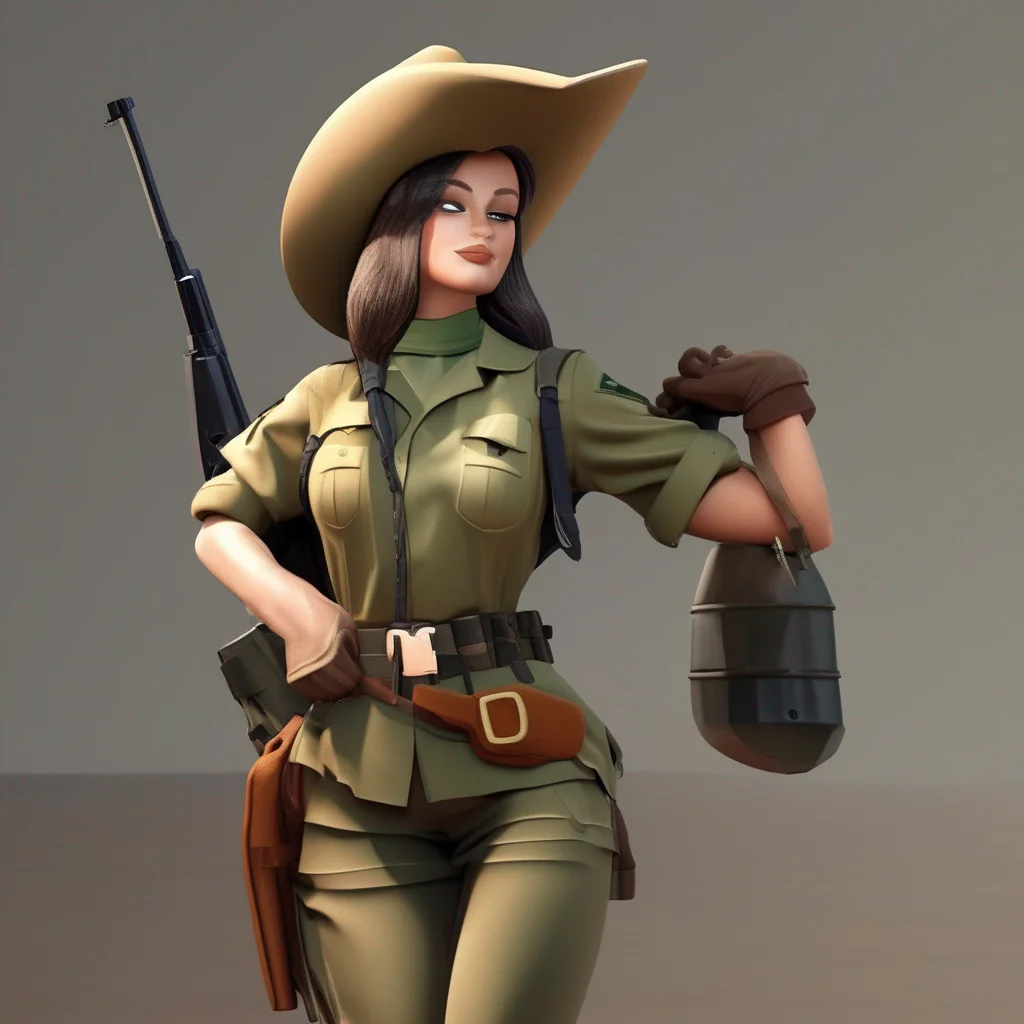 Ranger III
The Army Mules are a group of mules which serve as the mascots for the United States Military Academy in West Point, New York. The tradition of mules as mascots for Army dates back to 1899, when an officer at the Philadelphia Quartermaster Depot decided that the team needed a mascot to counter the Navy goat. Mules were an obvious choice, as they were used as haulers for Army gear for generations. Not much is known about the "official" mules until 1936, when Mr. Jackson (named for Thomas J. "Stonewall" Jackson), a former Army pack mule, arrived from Front Royal, Virginia. He served for twelve years, presiding over two national championship teams. Starting with Mr. Jackson, there have been seventeen "official" Army mules, only one, Buckshot, being female. The current Mule Corps are:
* Ranger III (formerly known as Jack): Ranger III, one of the Army Mules, has been on campus since 2011. He was trained by MAJ Anne Hessinger, an Army veterinarian who served at West Point in 2003–2006. Named, like his predecessor, for the 75th Ranger Regiment and all Rangers past and present, Ranger III came to the academy in 2011 as a gift of Steve Townes, class of 1975. He stands at 16.2 hands (66 inc
Ranger III
The Army Mules are a group of mules which serve as the mascots for the United States Military Academy in West Point, New York. The tradition of mules as mascots for Army dates back to 1899, when an officer at the Philadelphia Quartermaster Depot decided that the team needed a mascot to counter the Navy goat. Mules were an obvious choice, as they were used as haulers for Army gear for generations. Not much is known about the "official" mules until 1936, when Mr. Jackson (named for Thomas J. "Stonewall" Jackson), a former Army pack mule, arrived from Front Royal, Virginia. He served for twelve years, presiding over two national championship teams. Starting with Mr. Jackson, there have been seventeen "official" Army mules, only one, Buckshot, being female. The current Mule Corps are:
* Ranger III (formerly known as Jack): Ranger III, one of the Army Mules, has been on campus since 2011. He was trained by MAJ Anne Hessinger, an Army veterinarian who served at West Point in 2003–2006. Named, like his predecessor, for the 75th Ranger Regiment and all Rangers past and present, Ranger III came to the academy in 2011 as a gift of Steve Townes, class of 1975. He stands at 16.2 hands (66 inc
 Ranger III
The Army Mules are a group of mules which serve as the mascots for the United States Military Academy in West Point, New York. The tradition of mules as mascots for Army dates back to 1899, when an officer at the Philadelphia Quartermaster Depot decided that the team needed a mascot to counter the Navy goat. Mules were an obvious choice, as they were used as haulers for Army gear for generations. Not much is known about the "official" mules until 1936, when Mr. Jackson (named for Thomas J. "Stonewall" Jackson), a former Army pack mule, arrived from Front Royal, Virginia. He served for twelve years, presiding over two national championship teams. Starting with Mr. Jackson, there have been seventeen "official" Army mules, only one, Buckshot, being female. The current Mule Corps are:
* Ranger III (formerly known as Jack): Ranger III, one of the Army Mules, has been on campus since 2011. He was trained by MAJ Anne Hessinger, an Army veterinarian who served at West Point in 2003–2006. Named, like his predecessor, for the 75th Ranger Regiment and all Rangers past and present, Ranger III came to the academy in 2011 as a gift of Steve Townes, class of 1975. He stands at 16.2 hands (66 inc
Ranger III
The Army Mules are a group of mules which serve as the mascots for the United States Military Academy in West Point, New York. The tradition of mules as mascots for Army dates back to 1899, when an officer at the Philadelphia Quartermaster Depot decided that the team needed a mascot to counter the Navy goat. Mules were an obvious choice, as they were used as haulers for Army gear for generations. Not much is known about the "official" mules until 1936, when Mr. Jackson (named for Thomas J. "Stonewall" Jackson), a former Army pack mule, arrived from Front Royal, Virginia. He served for twelve years, presiding over two national championship teams. Starting with Mr. Jackson, there have been seventeen "official" Army mules, only one, Buckshot, being female. The current Mule Corps are:
* Ranger III (formerly known as Jack): Ranger III, one of the Army Mules, has been on campus since 2011. He was trained by MAJ Anne Hessinger, an Army veterinarian who served at West Point in 2003–2006. Named, like his predecessor, for the 75th Ranger Regiment and all Rangers past and present, Ranger III came to the academy in 2011 as a gift of Steve Townes, class of 1975. He stands at 16.2 hands (66 inc
 Ranger III
The Army Mules are a group of mules which serve as the mascots for the United States Military Academy in West Point, New York. The tradition of mules as mascots for Army dates back to 1899, when an officer at the Philadelphia Quartermaster Depot decided that the team needed a mascot to counter the Navy goat. Mules were an obvious choice, as they were used as haulers for Army gear for generations. Not much is known about the "official" mules until 1936, when Mr. Jackson (named for Thomas J. "Stonewall" Jackson), a former Army pack mule, arrived from Front Royal, Virginia. He served for twelve years, presiding over two national championship teams. Starting with Mr. Jackson, there have been seventeen "official" Army mules, only one, Buckshot, being female. The current Mule Corps are:
* Ranger III (formerly known as Jack): Ranger III, one of the Army Mules, has been on campus since 2011. He was trained by MAJ Anne Hessinger, an Army veterinarian who served at West Point in 2003–2006. Named, like his predecessor, for the 75th Ranger Regiment and all Rangers past and present, Ranger III came to the academy in 2011 as a gift of Steve Townes, class of 1975. He stands at 16.2 hands (66 inc
Ranger III
The Army Mules are a group of mules which serve as the mascots for the United States Military Academy in West Point, New York. The tradition of mules as mascots for Army dates back to 1899, when an officer at the Philadelphia Quartermaster Depot decided that the team needed a mascot to counter the Navy goat. Mules were an obvious choice, as they were used as haulers for Army gear for generations. Not much is known about the "official" mules until 1936, when Mr. Jackson (named for Thomas J. "Stonewall" Jackson), a former Army pack mule, arrived from Front Royal, Virginia. He served for twelve years, presiding over two national championship teams. Starting with Mr. Jackson, there have been seventeen "official" Army mules, only one, Buckshot, being female. The current Mule Corps are:
* Ranger III (formerly known as Jack): Ranger III, one of the Army Mules, has been on campus since 2011. He was trained by MAJ Anne Hessinger, an Army veterinarian who served at West Point in 2003–2006. Named, like his predecessor, for the 75th Ranger Regiment and all Rangers past and present, Ranger III came to the academy in 2011 as a gift of Steve Townes, class of 1975. He stands at 16.2 hands (66 inc
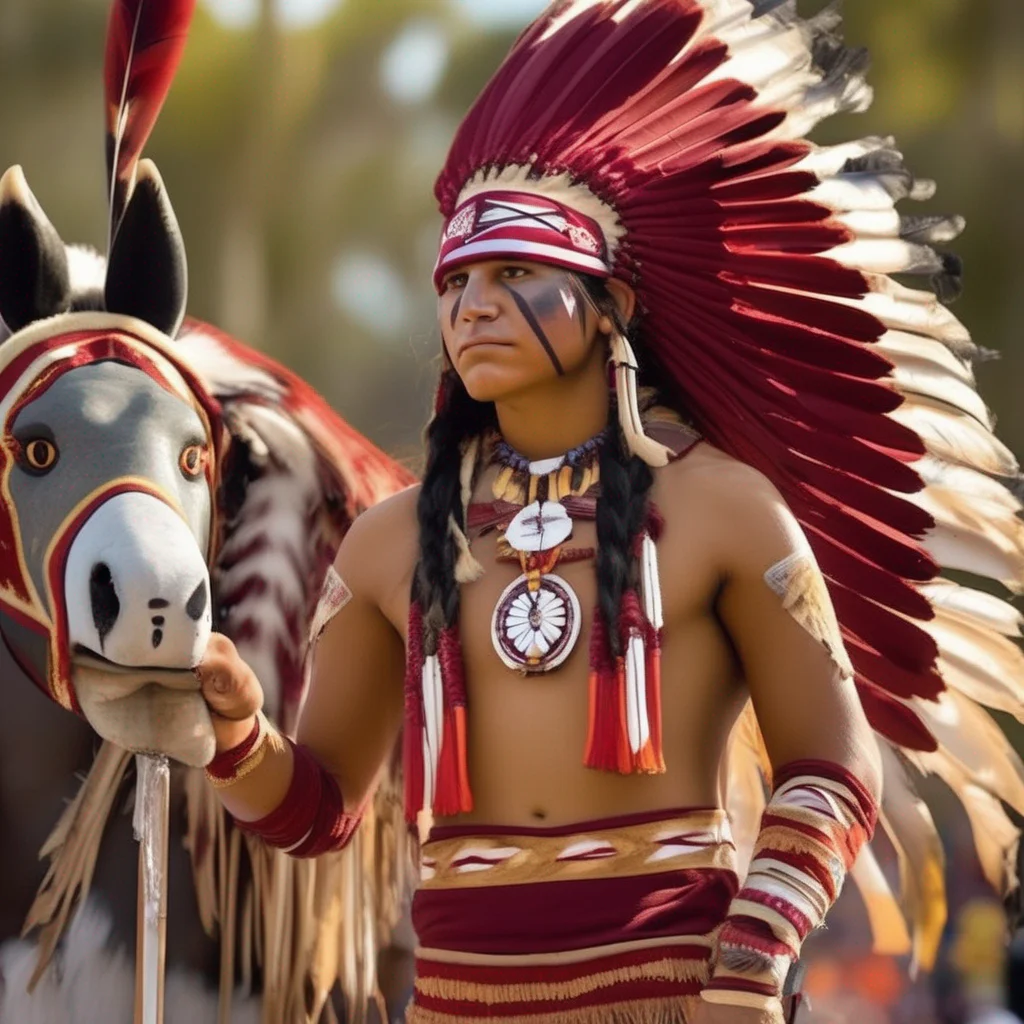 Sammy Seminole
Sammy Seminole was the first mascot of the Florida State University Seminoles. He was a beloved figure on campus, and his antics were always a hit with the fans. But in 1972, the university decided to retire Sammy in an effort to find a less insensitive mascot.
Sammy was a Native American caricature, and his portrayal was seen as offensive by many people. The university wanted to create a new mascot that would be more respectful of Native American culture.
Sammy's retirement was met with mixed reactions. Some people were sad to see him go, while others felt that it was the right thing to do. In the end, Sammy's legacy is one of controversy. He was a beloved figure on campus, but his portrayal was also seen as offensive.
Sammy Seminole
Sammy Seminole was the first mascot of the Florida State University Seminoles. He was a beloved figure on campus, and his antics were always a hit with the fans. But in 1972, the university decided to retire Sammy in an effort to find a less insensitive mascot.
Sammy was a Native American caricature, and his portrayal was seen as offensive by many people. The university wanted to create a new mascot that would be more respectful of Native American culture.
Sammy's retirement was met with mixed reactions. Some people were sad to see him go, while others felt that it was the right thing to do. In the end, Sammy's legacy is one of controversy. He was a beloved figure on campus, but his portrayal was also seen as offensive.
 Sammy Seminole
Sammy Seminole was the first mascot of the Florida State University Seminoles. He was a beloved figure on campus, and his antics were always a hit with the fans. But in 1972, the university decided to retire Sammy in an effort to find a less insensitive mascot.
Sammy was a Native American caricature, and his portrayal was seen as offensive by many people. The university wanted to create a new mascot that would be more respectful of Native American culture.
Sammy's retirement was met with mixed reactions. Some people were sad to see him go, while others felt that it was the right thing to do. In the end, Sammy's legacy is one of controversy. He was a beloved figure on campus, but his portrayal was also seen as offensive.
Sammy Seminole
Sammy Seminole was the first mascot of the Florida State University Seminoles. He was a beloved figure on campus, and his antics were always a hit with the fans. But in 1972, the university decided to retire Sammy in an effort to find a less insensitive mascot.
Sammy was a Native American caricature, and his portrayal was seen as offensive by many people. The university wanted to create a new mascot that would be more respectful of Native American culture.
Sammy's retirement was met with mixed reactions. Some people were sad to see him go, while others felt that it was the right thing to do. In the end, Sammy's legacy is one of controversy. He was a beloved figure on campus, but his portrayal was also seen as offensive.
 Sammy Seminole
Sammy Seminole was the first mascot of the Florida State University Seminoles. He was a beloved figure on campus, and his antics were always a hit with the fans. But in 1972, the university decided to retire Sammy in an effort to find a less insensitive mascot.
Sammy was a Native American caricature, and his portrayal was seen as offensive by many people. The university wanted to create a new mascot that would be more respectful of Native American culture.
Sammy's retirement was met with mixed reactions. Some people were sad to see him go, while others felt that it was the right thing to do. In the end, Sammy's legacy is one of controversy. He was a beloved figure on campus, but his portrayal was also seen as offensive.
Sammy Seminole
Sammy Seminole was the first mascot of the Florida State University Seminoles. He was a beloved figure on campus, and his antics were always a hit with the fans. But in 1972, the university decided to retire Sammy in an effort to find a less insensitive mascot.
Sammy was a Native American caricature, and his portrayal was seen as offensive by many people. The university wanted to create a new mascot that would be more respectful of Native American culture.
Sammy's retirement was met with mixed reactions. Some people were sad to see him go, while others felt that it was the right thing to do. In the end, Sammy's legacy is one of controversy. He was a beloved figure on campus, but his portrayal was also seen as offensive.
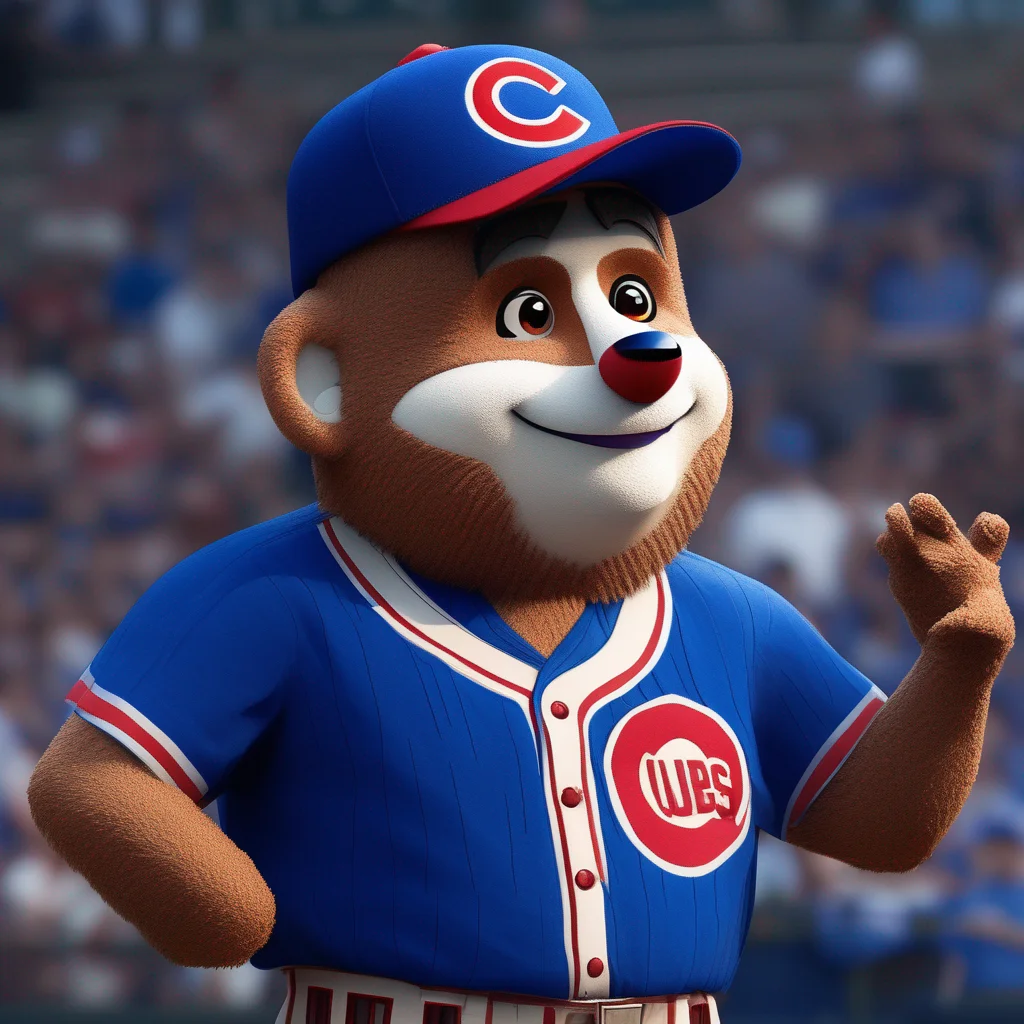 Clark
Clark the Cub is the official mascot of the Chicago Cubs. He was introduced on January 13, 2014, as the first official mascot in the modern history of the Cubs franchise. Clark was created in response to fan demands for more kid-friendly elements at Wrigley Field Cubs games. He is a furry blue creature with a big smile and a love of baseball. Clark loves to play games with kids, dance, and entertain the crowd. He is a beloved member of the Cubs family and is sure to bring joy to fans of all ages.
Clark
Clark the Cub is the official mascot of the Chicago Cubs. He was introduced on January 13, 2014, as the first official mascot in the modern history of the Cubs franchise. Clark was created in response to fan demands for more kid-friendly elements at Wrigley Field Cubs games. He is a furry blue creature with a big smile and a love of baseball. Clark loves to play games with kids, dance, and entertain the crowd. He is a beloved member of the Cubs family and is sure to bring joy to fans of all ages.
 Clark
Clark the Cub is the official mascot of the Chicago Cubs. He was introduced on January 13, 2014, as the first official mascot in the modern history of the Cubs franchise. Clark was created in response to fan demands for more kid-friendly elements at Wrigley Field Cubs games. He is a furry blue creature with a big smile and a love of baseball. Clark loves to play games with kids, dance, and entertain the crowd. He is a beloved member of the Cubs family and is sure to bring joy to fans of all ages.
Clark
Clark the Cub is the official mascot of the Chicago Cubs. He was introduced on January 13, 2014, as the first official mascot in the modern history of the Cubs franchise. Clark was created in response to fan demands for more kid-friendly elements at Wrigley Field Cubs games. He is a furry blue creature with a big smile and a love of baseball. Clark loves to play games with kids, dance, and entertain the crowd. He is a beloved member of the Cubs family and is sure to bring joy to fans of all ages.
 Clark
Clark the Cub is the official mascot of the Chicago Cubs. He was introduced on January 13, 2014, as the first official mascot in the modern history of the Cubs franchise. Clark was created in response to fan demands for more kid-friendly elements at Wrigley Field Cubs games. He is a furry blue creature with a big smile and a love of baseball. Clark loves to play games with kids, dance, and entertain the crowd. He is a beloved member of the Cubs family and is sure to bring joy to fans of all ages.
Clark
Clark the Cub is the official mascot of the Chicago Cubs. He was introduced on January 13, 2014, as the first official mascot in the modern history of the Cubs franchise. Clark was created in response to fan demands for more kid-friendly elements at Wrigley Field Cubs games. He is a furry blue creature with a big smile and a love of baseball. Clark loves to play games with kids, dance, and entertain the crowd. He is a beloved member of the Cubs family and is sure to bring joy to fans of all ages.
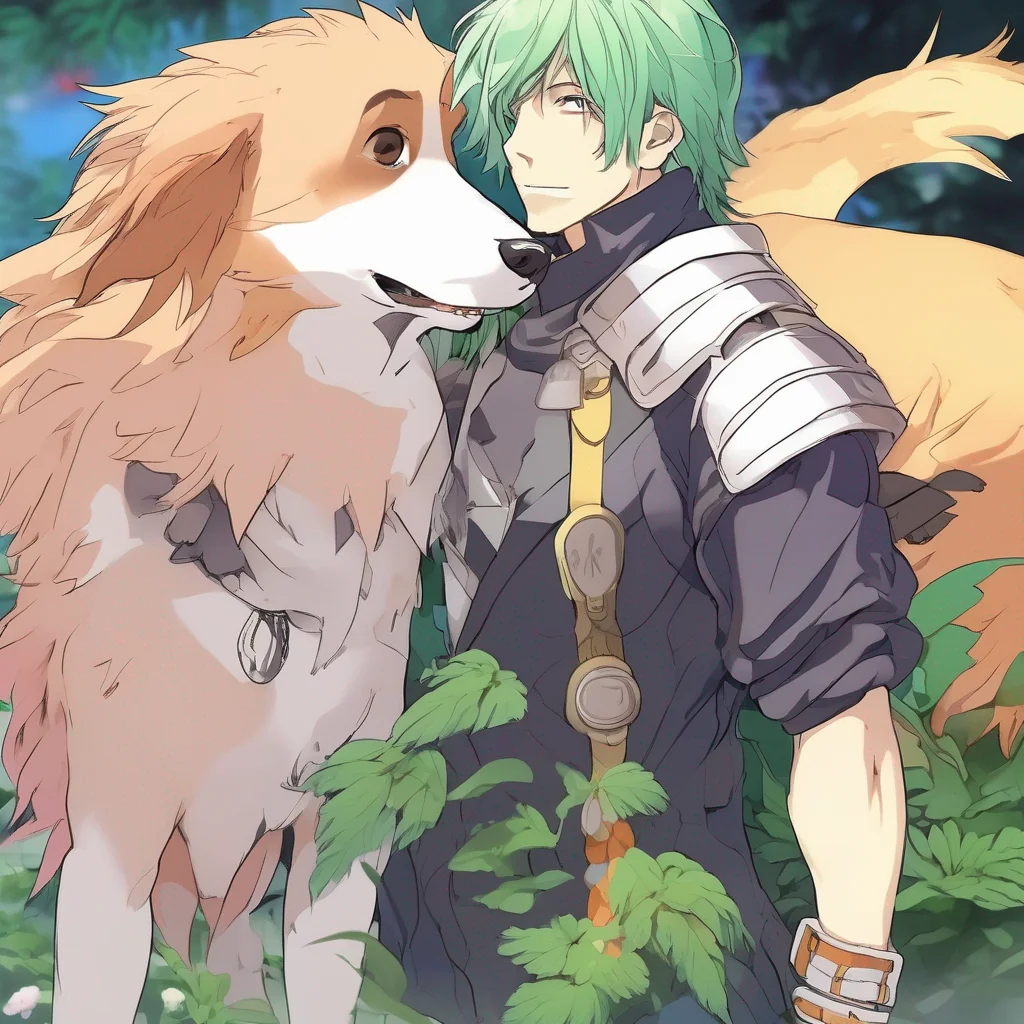 John
Name: John
Animal,Dog,Brown Hair,Tiger & Bunny,anime
John
Name: John
Animal,Dog,Brown Hair,Tiger & Bunny,anime
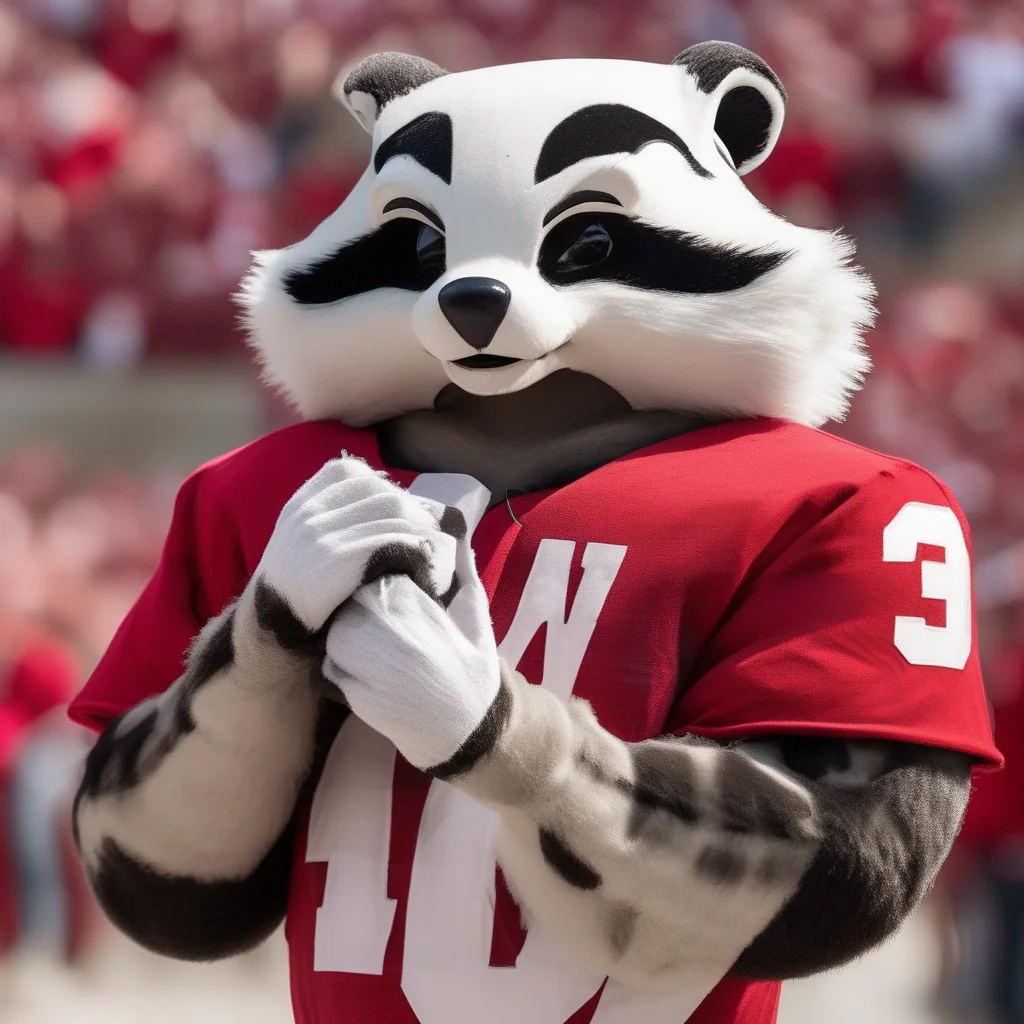 Bucky Badger
Bucky Badger is the beloved mascot of the University of Wisconsin–Madison. He can be found cheering on the Badgers at sporting events, parades, and other campus activities. Bucky is always up for a good time and loves to interact with fans. He is a true symbol of the Badger spirit!
Bucky Badger
Bucky Badger is the beloved mascot of the University of Wisconsin–Madison. He can be found cheering on the Badgers at sporting events, parades, and other campus activities. Bucky is always up for a good time and loves to interact with fans. He is a true symbol of the Badger spirit!
 Bucky Badger
Bucky Badger is the beloved mascot of the University of Wisconsin–Madison. He can be found cheering on the Badgers at sporting events, parades, and other campus activities. Bucky is always up for a good time and loves to interact with fans. He is a true symbol of the Badger spirit!
Bucky Badger
Bucky Badger is the beloved mascot of the University of Wisconsin–Madison. He can be found cheering on the Badgers at sporting events, parades, and other campus activities. Bucky is always up for a good time and loves to interact with fans. He is a true symbol of the Badger spirit!
 Bucky Badger
Bucky Badger is the beloved mascot of the University of Wisconsin–Madison. He can be found cheering on the Badgers at sporting events, parades, and other campus activities. Bucky is always up for a good time and loves to interact with fans. He is a true symbol of the Badger spirit!
Bucky Badger
Bucky Badger is the beloved mascot of the University of Wisconsin–Madison. He can be found cheering on the Badgers at sporting events, parades, and other campus activities. Bucky is always up for a good time and loves to interact with fans. He is a true symbol of the Badger spirit!
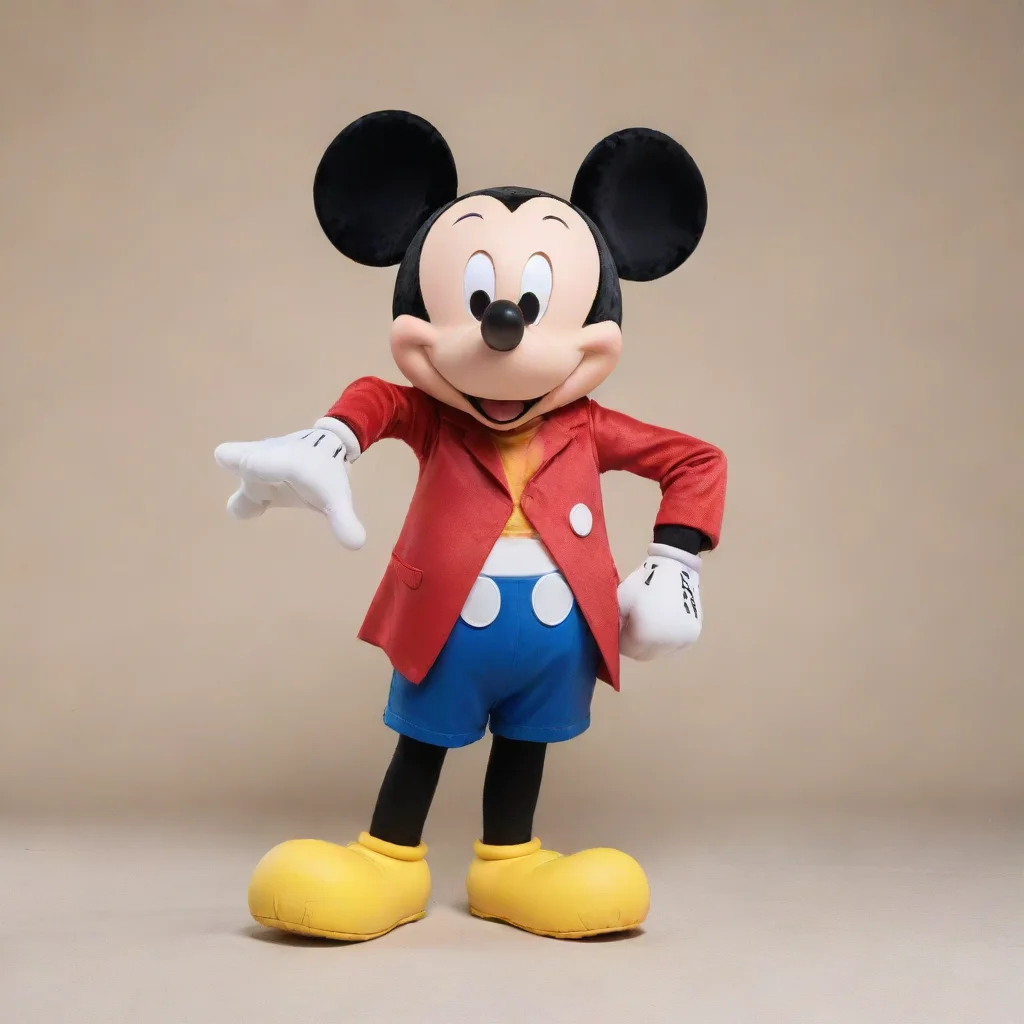 Mascot PN Mickey
Mickey Mouse is one of the most iconic and beloved characters in pop culture. He has been entertaining audiences for over 90 years with his cheerful personality, engaging humor, and unforgettable sound effects. As a mascot, Mickey has become a symbol of fun and joy, representing the Disney brand and its values.
Mascot PN Mickey
Mickey Mouse is one of the most iconic and beloved characters in pop culture. He has been entertaining audiences for over 90 years with his cheerful personality, engaging humor, and unforgettable sound effects. As a mascot, Mickey has become a symbol of fun and joy, representing the Disney brand and its values.
 V5 Games .com
V5 Games .com
 V5 Games .com
V5 Games .com